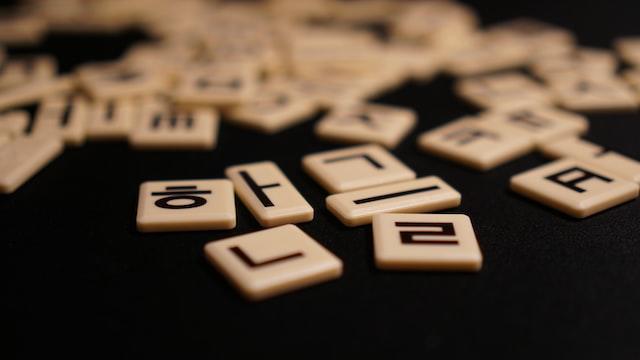Do you remember the first time you heard someone speaking Korean for the first time?
Was it from a cheesy Korean drama dialogue? Or was it from a catchy Kpop song from BTS?
Whatever first impressions you may have with the Korean language, you cannot change the fact that it is an intriguing language that is gaining popularity among many language learners, especially in Malaysia.
There's a high chance that you have decided to learn Korean as you are reading this.
Therefore, we will be looking at 5 practical tips to kickstart your Korean language learning journey as a beginner successfully in this article.

Tip 1: Build a strong foundation by mastering the Hangeul system
Just as every toddler goes through the same phase of learning A to Z when they are learning a new language like English or Malay, the same principle applies when you are learning Korean too!
The Korean alphabet system is known as Hangeul (한글). Altogether, there are 24 basic letters and digraphs (pairs of characters used to produce one sound) that you will come across while learning.
Let's look at the components that you need to master when you are learning the Hangeul system.
1.Korean consonants
- ㄱ [g/k ]
- ㄴ [n]
- ㄷ [d/t]
- ㄹ [r/l]
- ㅁ [m]
- ㅂ [b/p]
- ㅅ [s]
- ㅇ [ng]
- ㅈ [j]
- ㅊ [ch]
- ㅋ [k]
- ㅌ [t]
- ㅍ [p]
- ㅎ [h]
- ㄲ [kk]
- ㄸ [tt]
- ㅃ [pp]
- ㅆ [ss]
- ㅉ [jj]
2.Korean vowels
- ㅏ [a]
- ㅓ [eo]
- ㅗ [o]
- ㅜ [u]
- ㅡ [eu]
- ㅣ [i]
- ㅐ [ae]
- ㅔ [e]
- ㅑ [ya]
- ㅕ [yeo]
- ㅛ [yo]
- ㅠ [yu]
- ㅒ [yae]
- ㅖ [ye]
- ㅘ [wa]
- ㅝ [wo]
- ㅙ [wae]
- ㅞ [we]
- ㅚ [oe]
- ㅟ [wi]
- ㅢ [ui]
3. The way to write consonant and vowel combinations in Korean
When it comes to writing the Hangeul letters, there is a particular stroke order that you need to follow. The letters are written from left to right, and also from top to bottom.

Source: Photo by ibmoon Kim on Unsplash
Whenever you see a Korean word, it is written in a few vowels and consonant combinations.
- Combination 1: Left (Consonant) +Right (Vowel)
Example of words: 사, 나, 미
- Combination 2: Top (Consonant) + Bottom (Vowel)
Example of words: 소, 드, 수
- Combination 3: Top (Consonant) + Middle (Vowel) + Bottom (Consonant)
Example of words: 꿈, 죽, 중
- Combination 4: Top left (Consonant) + Top right (Vowel) + Bottom (Consonant)
Example of words: 당, 신, 책
- Combination 5: Top left (Consonant) + Top right (Vowel) + Bottom ( Two final consonants)
Example of words: 앉, 없,읽
Important rules to remember: Vowels cannot be written entirely by themselves and to form a proper Hangeul syllable, you need to at least have a consonant and vowel.
Learn more about the amazing benefits of learning Korean here.
Tip 2: Familiarize yourself with the natural Korean pronunciation through various media and resources
After mastering the Hangeul system, you can then begin to read, write and even speak basic Korean. From there, you can continue to strengthen your foundation in the Korean language through these resources.
1. Korean books for beginners
It's important to diversify your book selection when you are learning a new language as a beginner. Apart from a book that focuses on learning the Hangeul system, you can also opt for books that specialise in teaching basic Korean verbs, Korean grammar, Korean daily conversations and even short stories.
Don't forget that most of these books also come with comprehensive audio guides that are recorded by native Korean speakers. When you listen regularly to different Korean words and Korean conversations that are used in different settings, you will be able to pick up the right intonation, speech pattern and pronunciation in the most natural manner.
2. Korean variety shows
While you normally watch a Korean drama for its plot and cast or listen to a Kpop song due to the melody or your favourite celebrity, Korean variety shows promise a great deal of entertainment and cultural and educational value.
You can't talk about Korean variety shows without mentioning the legendary Running Man.
Regular viewers of Running Man would remember the classic name-tagging race, water slaps punishment, cooking competitions, drama parodies, and also iconic couple races with various guest celebrities ever since this show began in 2010.

Source: Forbes
This means you will be able to explore various cultural elements of Korea when you are watching a Korean variety show. For example, you'll learn what's a kimbap (Korean seaweed rice roll) or tteokbeoki (rice cake), mukbang when they are talking about Korean street foods.
You'll learn about the right way of pronouncing various clothing items like moja (cap/hat), minsomae (singlet) if the episode revolves around a fashion makeover theme.
The best part is, you'll never know what new things you get to learn with every new episode!
3. Korean language podcasts
Listening is a core skill to improve your pronunciation and overall comprehension of a language. That being said, listening to Korean podcasts is a great way to have a flexible and entertaining learning experience.
You can download as many podcasts as you want and listen to them on your earphone when you are travelling or play them in the car when you are driving. You can also choose which episodes to focus on (for example, vocabulary, grammar, and conversation styles) and replay them anywhere and anytime you like.
Most podcast episodes have a relatively short duration (15-30 minutes), so you can be certain that it's super easy to pay attention to.
Begin your language-learning adventure by diving deep into the rich history of the Korean language.

Tip 3: Keep a notebook whenever you come across new words
Nothing beats a straightforward language studying method like keeping a record of what you have learnt.
We highly recommend you keep a Korean vocabulary/sentence notebook to write down every new word that you are learning due to these three main benefits.
Benefit 1: Expand your vocabulary
When you write down new words, you will automatically be able to remember them better alongside their meaning and sentence usage.
The key to having a notebook is to motivate you to be extra intentional when you come across a new word. You'll also be encouraged to fill the pages of your notebook throughout your language-learning process.
Benefit 2: Learn how to construct simple sentences
When you have learnt a new word and its meaning, the next step you should take is to use the word to construct a new, simple sentence. This will help you to immediately improve your Korean reading and writing skills.
For example, if you have learnt a new word like 혼자 (honja, which means alone), you can then attempt to construct a new meaningful sentence like this.
거기 혼자 가지 마세요. --> Please don't go there alone.
Benefit 3: Use it during your daily conversations
After writing down the new words and their sample sentences, you can then practice them by using them during your daily conversations.
You can either record yourself speaking the word/sentence or practice saying the sentences with your friends or Korean tutor.
You'll get to discover a whole new world of Korean culture and language when you read this article.
Tip 4: Don't be afraid to speak "broken" Korean whenever you have the opportunity
We get it, it can sometimes be awkward when you are not sure if you are saying the right word or pronouncing a word correctly when you are just learning a language.
Learning a new language requires lots of confidence and most importantly, lots of persistent practice. As a beginner when you're learning Korean, it's important to set a goal to progress and not to sound perfect in one go.
You can only progress and polish your speaking skills when you are not afraid to make mistakes through the following methods.
Method 1: Listen and repeat after a native speaker
One way to practice speaking Korean is through continuous listening and repeating. Think of yourself as a parrot. Take your time to understand how each word is pronounced.
For example, pay attention to the syllables which require you to close your mouth a bit more or the syllables which require you to pull the intonation a bit longer.
Method 2: Record yourself speaking
Sometimes, we may not realise our speaking habits or mistakes. Whenever you are practising speaking on your own, record yourself so that you can compare your own recording with how native speakers pronounce the words or read certain passages.
Method 3: Speak to your friends who are also learning Korean
One-way conversations can bore you, especially when you are learning a new language.

Source: Xframe
Initiate simple conversations with your friends who are also learning Korean so that you all can practice in the most relaxed manner. That way, you will have a more engaging and memorable speaking experience.
Tip 5: Take systematic beginner's lessons from an experienced Korean tutor
We have certainly saved the best tip for the last.
To enjoy a comprehensive beginner's lesson for Korean, you can engage a reliable Korean tutor at Superprof!
Having a Superprof Korean tutor will enable you to:
- Master the Korean alphabet with ease
- Identify the core components of Korean grammar
- How to speak Korean confidently
- Pass your Test of Proficiency in Korean (TOPIK) Level I/Level II
To kickstart your Korean learning journey at Superprof, you can head to the Superprof Malaysia homepage to start browsing for tutors who offer Korean beginners lessons near your city. You can also opt for online lessons according to your preferences.
Once you have reviewed their profiles and their hourly rates, you can then proceed to connect with your desired Korean tutor via a Superprof Student Subscription Pass at RM25!
Don't miss out on these resources that you can utilize during your Korean language learning journey.
We hope that you enjoyed reading this article and eventually become a master of the Korean language in no time!















